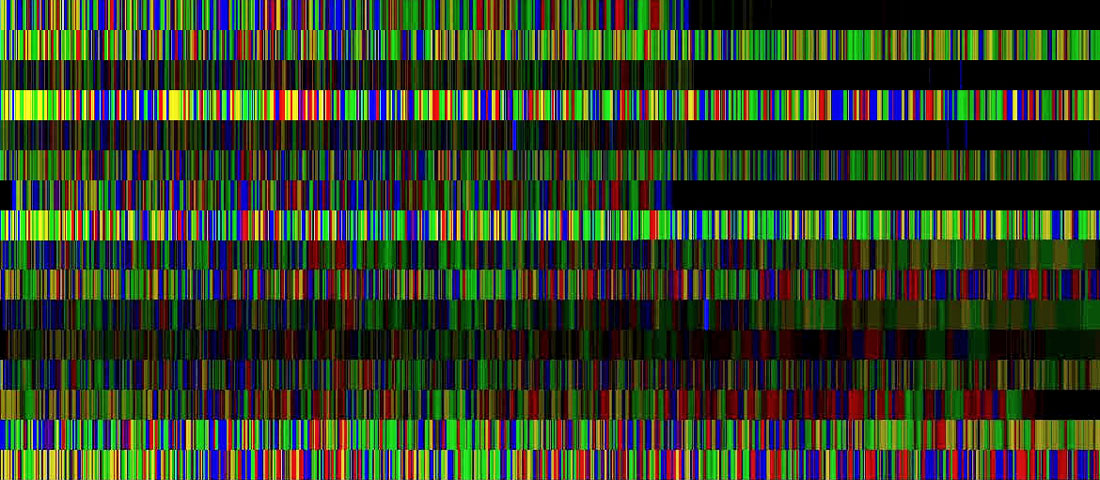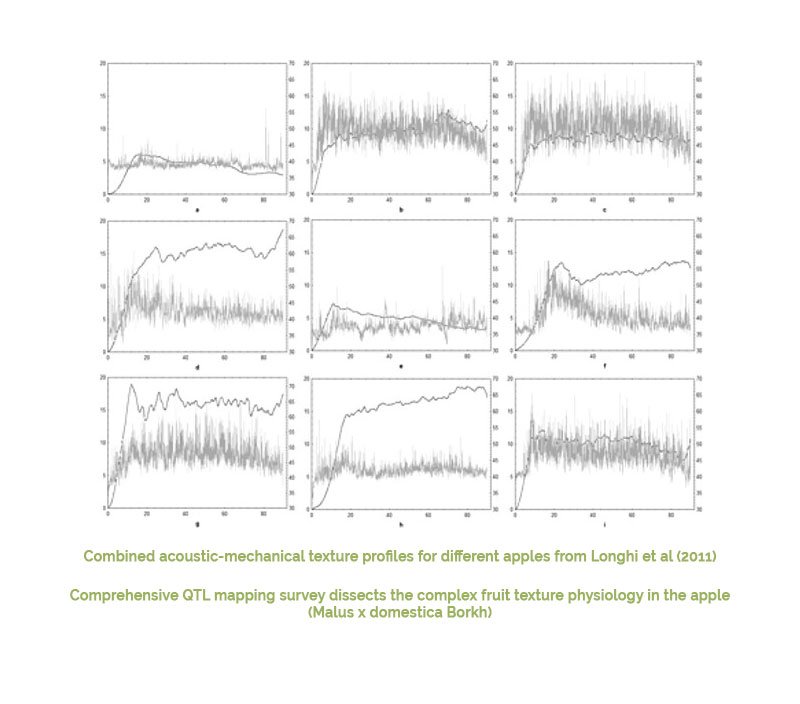The Apple’s Code of Life
An apple’s genome has twice as many genes as a human’s. Its sequencing has improved understanding and allowed more targeted fruit breeding.
In 2010 the genetic sequence of an apple – Golden Delicious – was published. This was the result of three years’ of detailed analysis led by what is now Fondazione Edmund Mach in the Trentino Alto Adige apple growing region of northern Italy.
“In simple terms, a sequenced genome is usually compared to a book or to a puzzle”
Professor Fabrizio Costa, a scientist involved in the sequencing, explains:
“A book because the DNA of an individual, often called the code of life, is represented by the linear sequence of four simple letters (ATCG). The sequencing is basically the reading of these four letters and the genes in the genome are the words. When you sequence these letters, you read only a certain short stretch, so to complete the book you have to assemble all these myriad pieces in the right order, like doing a puzzle. If you succeed in doing this, then you can finally understand the meaning of the book, the code of life hidden in the genome. The reading of the letters, the assembly of all the puzzle’s pieces, and the interpretation of the words are complicated and time-consuming work, needing several types of expertise.”
The work was therefore shared between 19 institutions around the world, with apple scientists bringing different skills. They found that an apple has 57,386 genes, more than twice the number in the human genome due to the duplicated origin of the apple’s genome which created more ‘junk’ DNA. The sequencing of its genome was a fundamental step in understanding the entire biological life of the apple.
“Having a complete and characterized genome is like having a navigator, now you have a tool indicating to you where to go, and the place you want to visit is a gene controlling a specific trait.”
Over centuries, people have selected and bred apples for different colour, texture, and storage.
Understanding the genome now allows more targeted fruit breeding. Scientists know the areas of the genome regulating the production of the flavonoid anthocyanin that causes red pigment in apple flesh and skin, and the parts controlling the cell wall enzymes that determine crunchy texture. In the laboratory, the important quality of apple crunch can be scientifically tested by resistance of an apple to mechanical force and by acoustic profiling.
Science has enabled earlier identification of favoured fruit traits, allowing more efficient development of apples that appeal to consumer taste and that store better, and improving disease and climate change resistance.
The Crunch Coda
an Apples & People Commission
This One Minute Piece for Piano and Apple Crunch, by Helena and Nathan Cavan is called: ‘The Crunch Coda’.
‘The Crunch Coda’ uses solely the apple’s genomic sequence, ATCG, to inform its musical vocabulary. The percussive nature of the apple bite is interpreted through “crunchy” rhythmic piano textures and octave transpositions. Bite samples overlay musical samples to create a satisfyingly energetic artistic experience of the eating of an apple, guaranteed to leave a smile.
The CymaGlyph, or sound image, of the apple-crunch-sound on water made possible by the Cymascope instrument, has been coloured to express both the sequencing of the apple’s DNA – red (showing letter T) and green (showing letter A) in Nicola Busatto’s beautiful photograph of a small part of the apple genome, as well as referencing the genome’s influence on apple skin colour.
The noble crunch image, with crown-like circlet of seed-like gems, is digitised and brought to life, synchronising and pulsating with the music. This is art & science history in the making: the first ever experience of listening to an apple crunch sound whilst watching the very same sound transformed into a graphic.
“Many apples were eaten in the making of this piece!”
Credits:
- Professor Fabrizio Costa Associate Professor of Agricultural Genetics at University of Trento, Italy
- Dr Nicola Busatto, Genomics and Biology of Fruit Crops Department, Fondazione Edmund Mach (formerly the Istituto Agrario di San Michele all’Adige)
The Crunch Coda:
- Music: Helena and Nathan Cavan www.helenacavan.com
- Recording engineer/producer Nathan Cavan
- CymaScope Laboratory Services John Stuart Reid www.cymascope.com and www.soundmadevisible.com
Sources:
- Espley et al (2007) Red colouration in apple fruit is due to the activity of the MYB transcription factor, MdMYB10. The Plant Journal
- Longhi et al (2012) Comprehensive QTL mapping survey dissects the complex fruit texture physiology in apple (Malus x domestica Borkh.) Journal of Experimental Botany
- Velasco et al (2010) The genome of the domestic apple (Malus x domestica Borkh.) Nature Genetics
Further Reading:
- Juniper and Mabberley (2019) The Extraordinary Story of the Apple








 Wassail Cup © National Trust Images - John Hammond, NT Cotehele
Wassail Cup © National Trust Images - John Hammond, NT Cotehele Pink Lady ® TV creative ‘Kalifa’ for Pink Lady ® Copyright © McCann 2020
Pink Lady ® TV creative ‘Kalifa’ for Pink Lady ® Copyright © McCann 2020